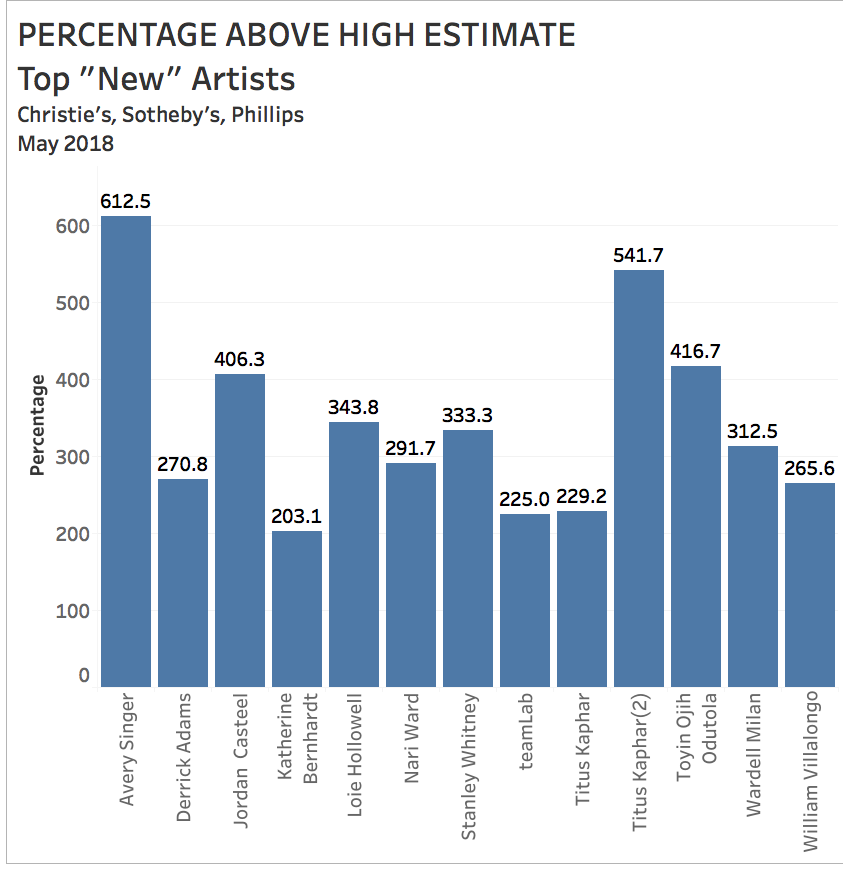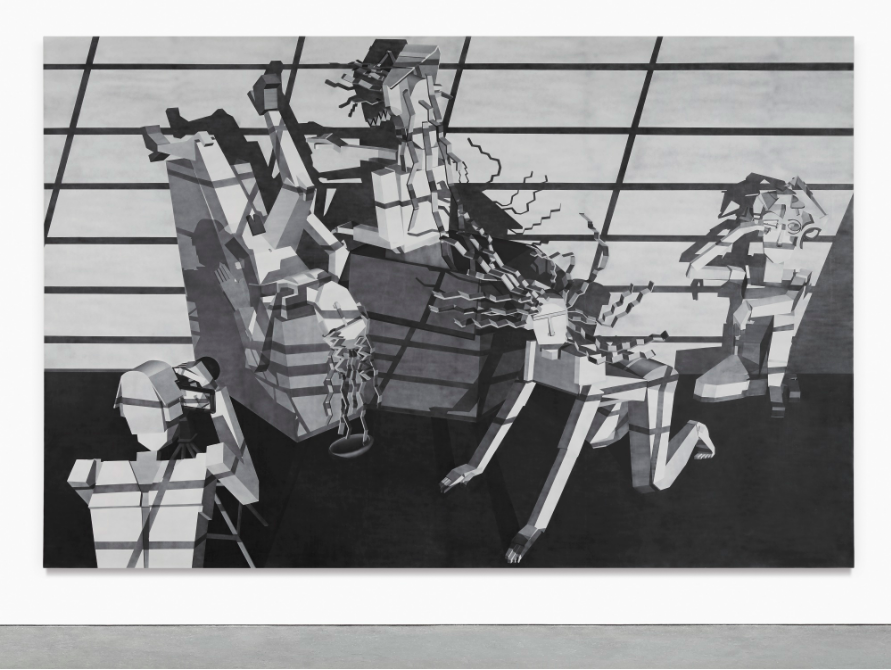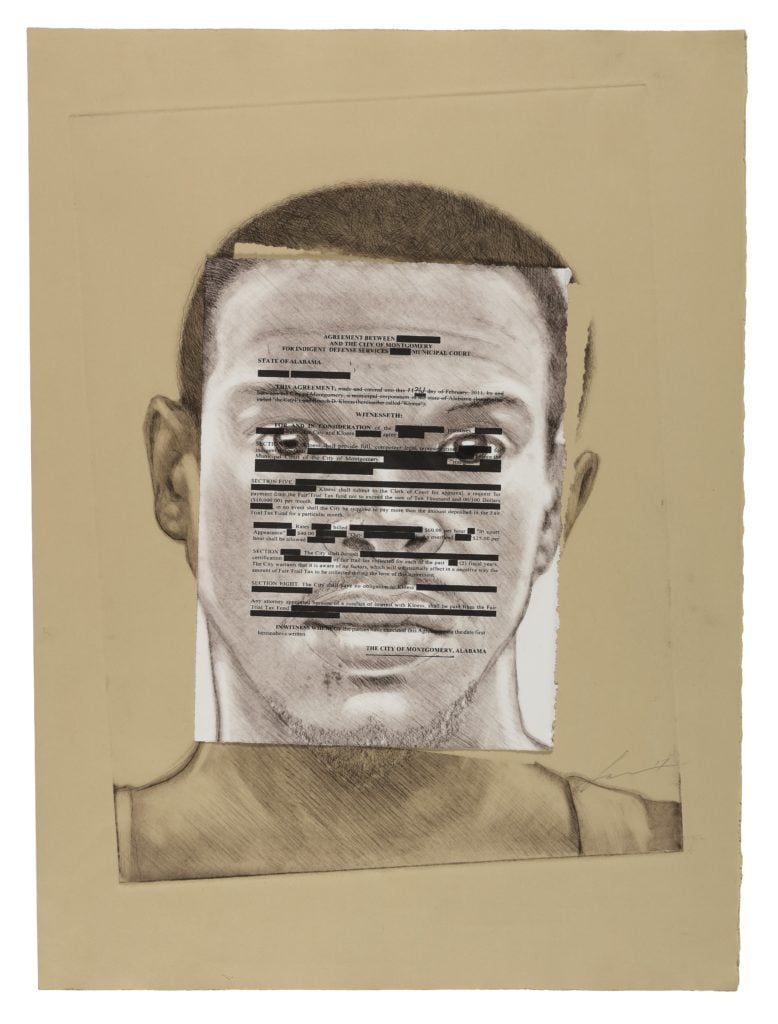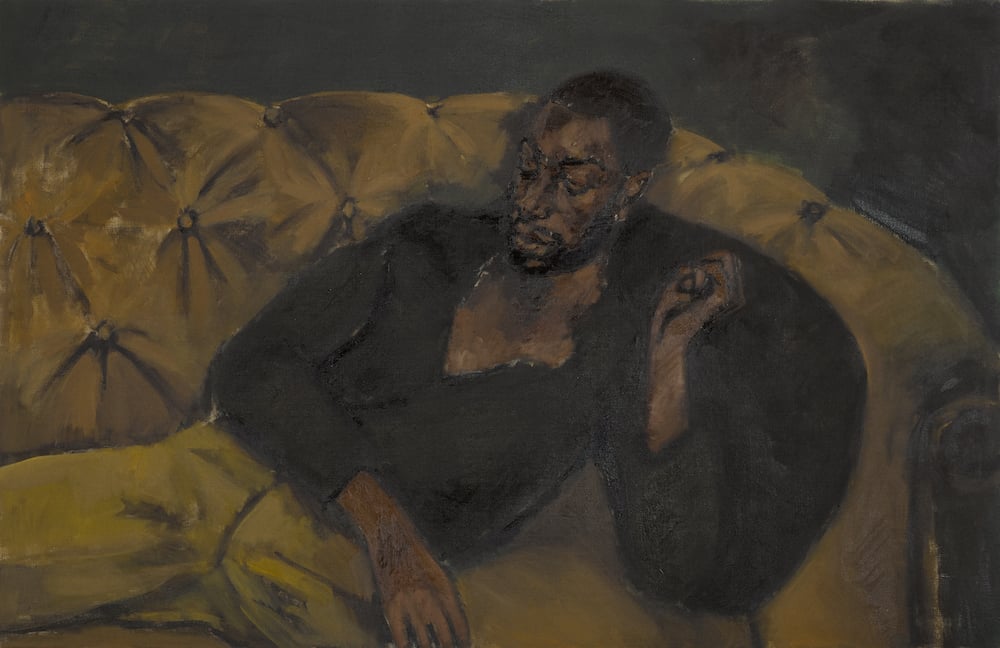One of the major takeaways from last Wednesday’s postwar and contemporary evening sale at Sotheby’s was the enormous success of key works by artists of color.
Kerry James Marshall’s Past Times (1997) became the standard-bearer of this trend, charging through its $12 million high estimate to a final price of $21.1 million. (It was purchased by none other than Sean Combs.)
In light of similarly strong performances from works by Mark Bradford, Julie Mehretu, Lynette Yiadom-Boakye, and Njideka Akunyili Crosby, many observers regarded the spring sales as evidence of a long-overdue refresh in the white-washed, male-dominated halls of the art market.
But a closer look at the week’s results suggests that this shift went deeper than the headline lots. The performance of work by living artists new to the prime May auctions hints that the same trend is unfolding well below the million-dollar threshold, indicating that this growth may have deeper roots—and a bigger future impact—than skeptics might expect.
Working with the artnet Price Database and artnet Analytics teams, I compiled a list of artists born after 1945 whose works were consigned to Christie’s, Sotheby’s, or Phillips’s respective contemporary sales in New York for the first time this year. The data set included 50 works by 46 different artists. (All prices included premiums unless otherwise indicated.)
From this sample, 13 lots by 12 different artists more than doubled their respective high estimates. And of those 12 in-demand artists, zero were white men. Instead, they included the likes of Stanley Whitney, Toyin Ojih Odutola, Derrick Adams, and others outside the pale male norm.

(Note: Based on teamLab’s upcoming museum in Tokyo and the heritage of founder Toshiyuki Inoko, I’m classifying the multidisciplinary collective as Japanese. It seems inconsequential if by some chance the group counts, or counted, a white guy among its more than 400 contributors during the making of the work in our data set.)
The key is that this talent pool includes none of the high-performing lots by the six artists of color celebrated after Sotheby’s contemporary evening sale. Aside from Marshall, the other five featured at the start of the auction—all of whose work was sold to benefit the Studio Museum’s new building campaign—combined to crush their nearly $7 million collective high estimate with a $16.4 million wrecking ball. Yet every member of this sextet had previously appeared in one of the Big Three houses’ May sales, ruling them out of our analysis.
While collecting institutions and blue-chip buyers continue their nascent competition for top-name black artists, this new set of auction results suggests that there is also organic demand for change at lower-priced levels of the market. As shown in the chart below, of the 13 lots in this sample, only three sold for more than $100,000. The other 10 all earned prices between $21,250 and $81,250, qualifying them for the ever-controversial “midlevel” designation. (Pre-sale estimates are shown as dark blue bars in the chart. Final sales prices appear above them as light blue bars.)

Also notable, this overwhelmingly successful group verged on gender parity. The 12 artists above consist of five women, six men, and teamLab. In fact, the most sought-after work in this selection came courtesy of a woman (though not one of color).

Avery Singer, Fellow Travelers, Flaming Creatures (2013). Image courtesy of Sotheby’s.
Avery Singer’s Fellow Travelers, Flaming Creatures (2013) entered Sotheby’s contemporary evening auction last Wednesday carrying a high estimate of $120,000. After a flash flood of bidding, the buyer’s premium raised its final price to $735,000—good for a gain of $615,000 and 612.5 percent over the house’s most optimistic projection.
Although not quite in the same league as Singer, other first-time artists still shattered expectations by any metric. teamLab’s Ever Blossoming Life – Gold (2014), a software work that endlessly generates unique floral compositions with limited digital life spans, sold for $225,000, or $125,000 above Christie’s highest estimate—the second-largest jump in sheer dollars (behind Singer).
African American artist Titus Kaphar’s Confession (2017) achieved the week’s second-highest multiple of a pre-sale estimate by selling for nearly five and a half times Sotheby’s highest valuation. The work, a portrait of a young black man overlaid with the redacted text of an agreement for a court-assigned defense attorney in Montgomery, Alabama, reached $81,250 against an estimate of $15,000.

Titus Kaphar, Confession (2017). Image courtesy of Sotheby’s.
By no means am I suggesting that the art market’s bias toward white men is now an ancient relic safely entombed. It would be naïve to make grand assumptions of any kind based on a single auction cycle, and especially so in the case of an issue as complex and enduring as this one. (Research shows, for example, that women artists who beat the odds and make it to auction do, on average, outperform their male counterparts at first, because men have a lower barrier to entry. They just struggle to reach the very top echelon of the market.)
I am also not suggesting that, even if the auction market is shifting toward a more diverse set of artists, the movement owes primarily to some great moral enlightenment. Auction houses only consign works they believe will sell, and many buyers in the resale sector make their choices in pursuit of investment upside.
In other words, this spring’s gravitation toward women artists and artists of color probably owes at least in part to sellers and buyers alike seeing these demographics as undervalued, not to their unalloyed desire to help course-correct the arc of art history. (Furthermore, because the US lacks a resale royalty for art, none of these artists—regardless of gender or ethnicity—benefits directly from these impressive auction sales, although their newfound secondary market success should certainly inform their prices on the primary market.)
Still, whether the motives are aesthetic, moral, or capitalist, this May’s results suggest that important segments of the buy and sell sides are beginning to believe in a future that is not dominated by white male artists. And that is an outcome worth both our attention and our optimism, however cautiously applied.











